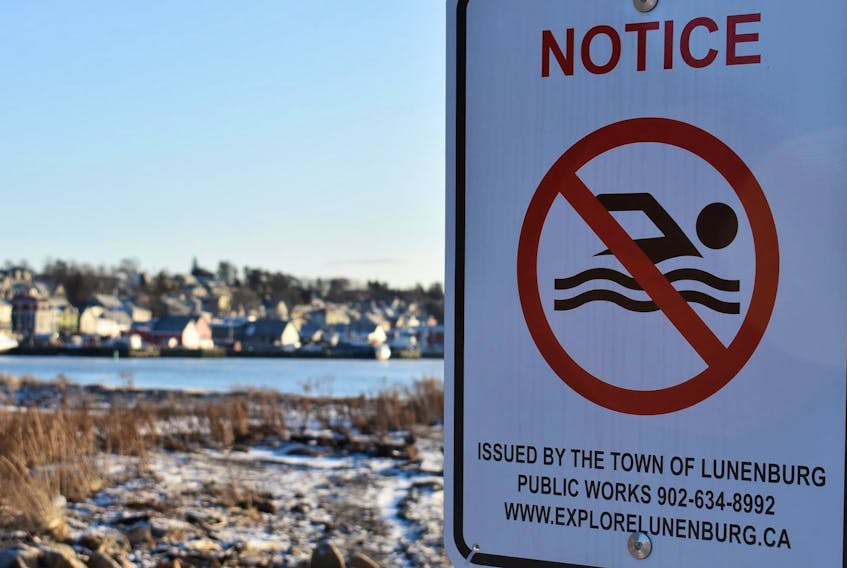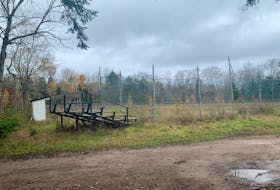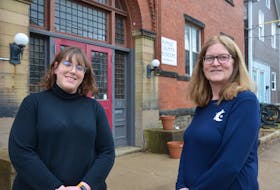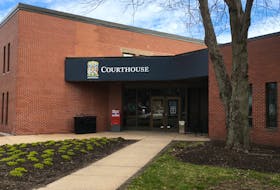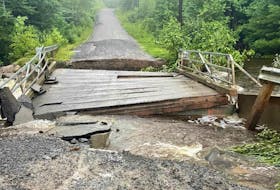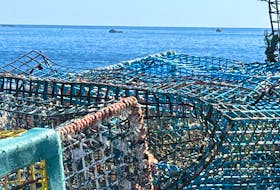The Town of Lunenburg is exploring its options after receiving a report outlining recommendations to improve the harbour’s water quality
Bluenose Coastal Action Foundation — which was contracted by the town in 2018 to conduct a water quality monitoring program — officially presented the report to council on Jan. 22.
Although the report has been presented, Lunenburg Mayor Rachel Bailey said it will be some time before the town can act on Coastal Action’s recommendations.
Bailey noted the report has yet to be discussed at council and that the town is waiting on a report from CBCL Engineering concerning the wastewater treatment plant before moving forward.
“We’re still awaiting some of their findings and recommendations. All of those things will be given more consideration on a gradual basis as we move towards determining our budget for the next fiscal year,” said Bailey.
But the mayor was clear that the town would be consulting with stakeholders, experts and scientists to help find the best solution for the much maligned harbour.
“We need to pay close attention,” she said.
THE REPORT
A total of eight recommendations are laid out in the report, which is titled the Lunenburg Harbour 2018 Water Quality Report, following testing throughout this past summer.
Coastal Action carried out water quality monitoring on a weekly basis from June 12 to Sept. 25 across several different sites.
During this time, states the report, testing revealed “significant, chronic bacterial pollution in parts of Lunenburg Harbour.”
Coastal Action selected three shoreline locations — the boat launch and Zwicker’s and Fishermen’s wharves — and found they exceeded Health Canada’s secondary contact guidelines at least 50 per cent of the time.
To combat bacterial levels, Coastal Action recommended investigating straight pipes in the community of Garden Lots, moving the outflow pipe under the Fishermen’s Wharf and looking into an artificial reef.
An artificial reef, which is an artificial mound home to oysters and other filter feeders, would serve two purposes.
Firstly, it would continue to guard against storm surge protection but it would also work as a natural water filtration system.
Other recommendations include better management of the harbour mooring field and continued monitoring and sampling of the harbour waters.
Shanna Fredericks, assistant director for Bluenose Coastal Action Foundation, said the report will help both the town and public understand the risks of water pollution.
But the report also shed some positive light.
“Prior to this program, we did know that there was a bacteria problem in the harbour,” she said. “(The report) has really shown us that there’s really only this one pocket where contamination is a big issue.”
Fredericks highlighted that certain parts of the harbour are in fact safe for boating and other recreational water activities.
MEDIA ATTENTION
Bailey said it is time to get back to the issues following a maelstrom of media attention last summer.
“The downside of all the media attention is that there was a lot of perspectives projected which led to misunderstandings about what the issues are,” she said.
“Our harbour is not a cesspool.”
Bailey added that the town is fully aware of the seriousness of the harbour’s pollution.
When asked about the next steps, Fredericks said the town will decide which direction to go.
She also added that the town has gone above and beyond to fix the issue in recent months.
“I think there was a bit of unfair press directed towards the Town of Lunenburg itself. This is not solely their responsibility,” said Fredericks.
She explained that the town, in addition to authorizing testing, also established the Lunenburg Harbour Health Advisory Group to tackle the issue.
However, reducing the amount of bacteria in the water remains a challenge.
As outlined in the report, parts of the harbour have very little flushing and are shallow.
“It has natural barriers to improvement,” said Bailey, adding that it will take the whole community to affect change.
“Our legacy has been in the fishing industry. The inshore Fishermen’s Wharf is an important component of our working waterfront. The fact that they’re negatively impacted by the condition of our harbour water quality is at the crux of the problem.”
OUTSIDE HELP
The Town of Lunenburg has also looked beyond the community to help address the harbour water quality issue.
Dr. Graham Gagnon, Director for the Centre for Water Resources Studies at Dalhousie University, has met with representatives from the town on several occasions to better understand the harbour’s situation.
Although Gagnon has yet to become officially involved with the town, he said he has a keen interest in the way forward.
“Improving water quality in the harbours is important for tourism, is important for the fisheries,” he said, adding that improving Lunenburg’s harbour is a matter of provincial interest.
When asked about enlisting Dalhousie’s help, Bailey said she expects to again speak to Gagnon once the town has fully examined the report.
However, Gagnon said he thinks the town is trending in the right direction.
“From what I understand from what their intent is, I expect the water quality to improve,” he said.
Gagnon was present at the town’s public information session to discuss the harbour on Nov. 28 and said he was impressed by the optimism.
Gagnon added that the town will continue to face challenges concerning planning and managing waste water itself but that the problem is being addressed.
“The nice thing about the South Shore is that people are aware of this. There is a consciousness of community to raise the bar and do the right thing,” he said.
“I think it’s very encouraging in many respects.”

